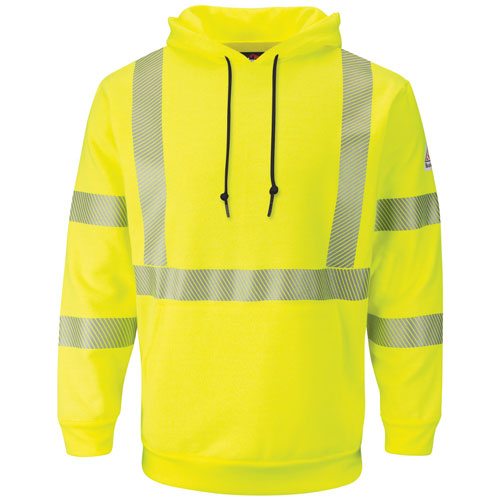[youtube https://www.youtube.com/watch?v=P-X2zuSeFVw&w=400&h=225]
It’s important for safety managers and their respective electrical workers to know the difference between flame-resistant and arc-rated clothing.
When working to comply with National Fire Protection Association (NFPA) rules, all arc-rated (AR) clothing is flame-resistant (FR), but not all flame-resistant clothing is arc-rated. In other words, an arc rating measures the insulation of FR fabrics to an arc flash.
NOTE: All personal protective equipment (PPE) clothing must qualify for an arc rating, according to arc flash protection standards in NFPA 70E, “Standard for Electrical safety in the Workplace.” General industry electricians (70E) must wear the appropriate level of AR clothing for the hazard, to reduce their risk of serious injury or death caused by an arc flash.
FR clothing
For a piece of clothing to be considered FR, the fabric must resist catching fire and be able to rapidly self-extinguish flames to protect the wearer from a flash fire, arc flash, molten metals and other hazards.
AR clothing
 AR clothing requires fabrics to be flame-resistant to even qualify for testing. Additionally, just because clothing is labelled as FR doesn’t mean it’s fully FR rated and able to provide an adequate level of protection for workers at risk of encountering arc flashes. Test out this layered arc rating calculator to meet your specific arc rating requirements.
AR clothing requires fabrics to be flame-resistant to even qualify for testing. Additionally, just because clothing is labelled as FR doesn’t mean it’s fully FR rated and able to provide an adequate level of protection for workers at risk of encountering arc flashes. Test out this layered arc rating calculator to meet your specific arc rating requirements.
AR fabric needs to pass the Arc Thermal Performance Value (ATPV) test, which predicts whether a second-degree burn would result, and calculates the energy likely to cause a second-degree burn through that fabric 50 percent of the time. This number, expressed in calories, becomes the arc rating for that fabric and any garment made from it.